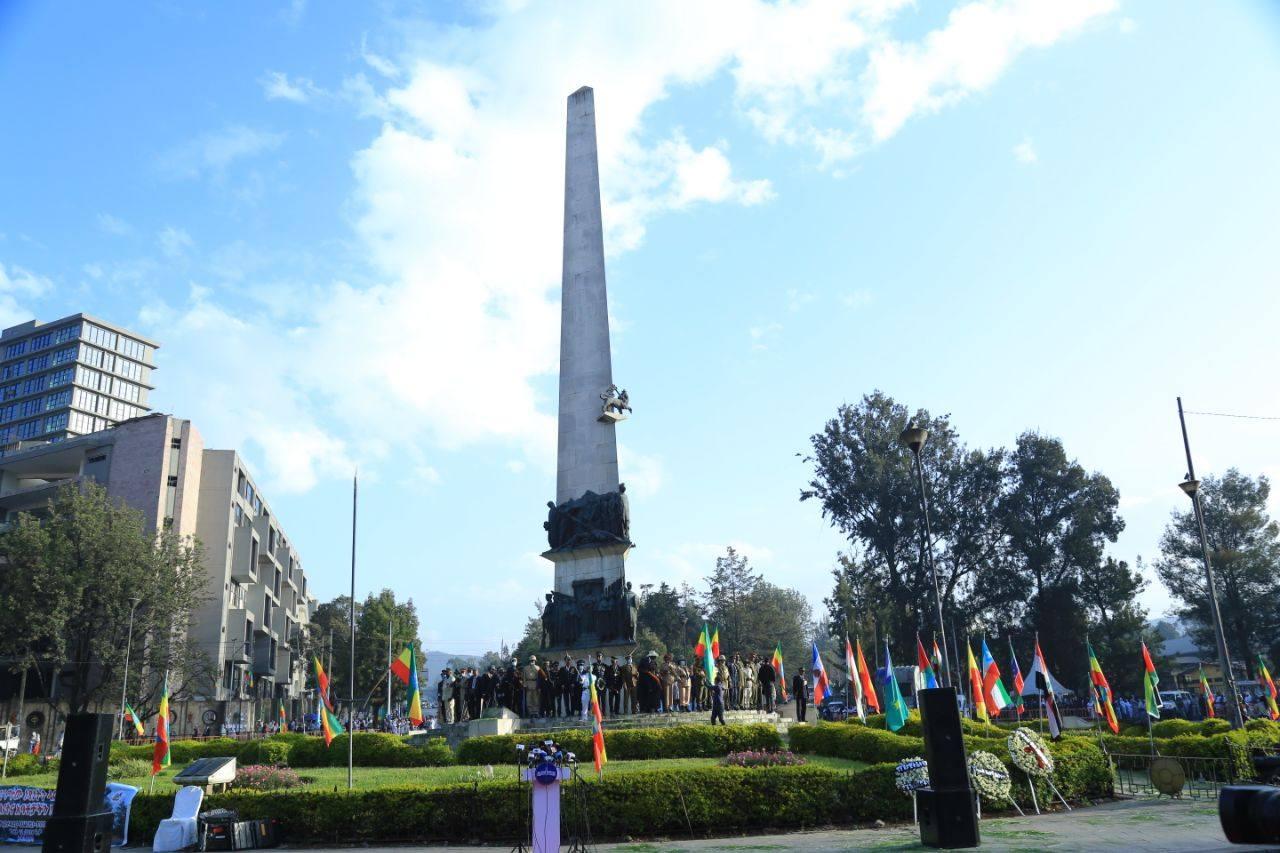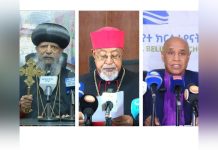Africa-Press – Ethiopia. OLOMON DIBABA
Every year on February 19, Ethiopians mark the Martyrs Day on which more than 30,000 Ethiopians were massacred by the troops of Fascist Italy 81 years ago following the attempted assassination on Marshal Rodolfo Graziani. That is why February is also marked as a month of martyrdom. The Italians conducted the most atrocious massacre that could have been considered as genocide of the highest proportions.
After 40 years of preparation following its defeat at The Battle of Adwa in Ethiopia, Italy made second attempt to colonize Ethiopia in 1934. Despite a letter submitted to the former League of Nations, on May 14, 1934, by the late Emperor Haile Selassie, Italy deployed a massive army ready to annex the entire territory of Ethiopia.
Italy deployed 685,000 soldiers. Italy had 6,000 machine guns, 2000 artillery and 599 tanks as well as 390 aircrafts. Italy later ordered and acquired 3,300 machine guns, 275 artillery pieces, 200 tanks and 205 aircrafts. This was no match to the Ethiopian Army which was comprised of 350,000-760,000 trained and untrained peasant soldiers with ammunition of 400,000 mainly old rifles, 234 antiquated artillery and 75 anti-tank guns; 4 tanks and 13 outmoded aircrafts with four pilots. (Kidane Alemayehu, A war Criminal who escaped Justice).
As an independent country and a member of the League of Nations, Ethiopia should have been provided with the League’s fullest solidarity and support against Italy’s invasion. However, what actually transpired was the League’s half hearted and ineffective measures which in fact facilitated Fascist Italy’s perpetration of devastating war crimes in Ethiopia.
According to Grip, Lina and Hart John in their book “ The use of Chemical Weapons in the 1935 Italo-Ethiopian War, the Fascist forces used mustard gas bombs on at least ten localities in Ethiopia including Tekeze area, Ambalage, Borena ( Wollo), Sekota, Mekele, Megalo, Wadla Delanta, Korem, Yirgalem and , Endamehoni.
Incidentally, terrorist TPLF conducted savage atrocities in the same areas the Fascist had committed the massacre before 80 years.
According to Alberto Sbachi (Ethiopia Under Mussolini”, pp 47-63 ), during the Italian occupation, one million Ethiopians including patriots, women and children were massacred of whom 30,000 were killed, under Graziani’s orders, within only three days (February 19-21, 1937) in Addis Ababa as well as over 2,000 monks and parishioners at Debre Libanos Monastery. Two thousand churches and 525,000 homes were destroyed and death of 14 million animals as a result of the environmental pollution by the mustard poison gas sprayed in many parts of Ethiopia.
The Hague Convention of 1899 to which Italy was also a signatory was the first instrument that forbade the use of chemical weapons. That was followed by the Geneva Protocol of 1925 forbidding the use of poison gases. Therefore, the Italian Fascist Government used chemical weapons in its war crimes in Ethiopia in utter disregard of the 1925 Geneva Protocol.
On February 19, 1937, two years after the Italian invasion of Ethiopia, Italy conducted a massacre on innocent Ethiopians in Addis Ababa. Fascist Italy conducted a three day rampage of indiscriminate killings of 30,000 Ethiopians mostly composed of the elderly, lactating and pregnant mothers and their children.
Marshal Rodolfo Graziani, Marchese di Neghelli, Viceroy of Italian East Africa, organized a public event at the Genete Leul Palace ( now a building that housed the Institute of Ethiopian Studies at Addis Ababa University) to provide alms to the poor to celebrate the birth of the baby Prince of Naples. Crowd from all walks of life were gathered in and out of the palace with the expectation of receiving gifts without the slightest hint of what will befall them.
On the morning of Friday of February 1937 two young Ethiopians Abraha Deboch and Mogus Asgedom resolved to assassinate Marshal Rodolfo Graziani, Marchese di Neghelli. Another young person of their own age cooperated with their plot. According to Richard Pankhurst, a taxi driver named Simeyon Adefres drove them out of the city. Pankhurst also credits him with providing the grenades that Abraha and Mogus threw on Graziani.
In the aftermath of the assassination attempt, the Italian response was immediate. According to Mockler, “Italian carabinieri had fired into the crowds of beggars and poor assembled for the distribution of almsand it is said that the Federal Secretary, Guido Cortese, even fired his revolver into the group of Ethiopian dignitaries standing around him.” Hours later, Cortese gave the fatal order. According to Bahiru Zewede, the attempted murder provided the Italians with the reason to implement Mussolini‘s order, issued as early as 3 May 1936, to summarily execute “The Young Ethiopians”, the small group of intellectuals who had received college education from American and European colleges.
For More News And Analysis About Ethiopia Follow Africa-Press






